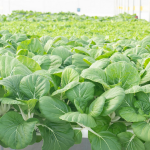The Burma Rice Research Station, the research arm of the Guyana Rice Development Board (GRDB) continues its work in the production of seed paddy to ensure that farmers benefit from quality seeds.
During the 1st crop over 17,522 bags of seed paddy were produced at the facility. The varieties planted included GRDB 10, GRDB 15, G98-196 among others. The GRDB 15, a long grain variety which was released in 2018 continues to receive good reviews from farmers and has been stated as ‘excellent’ in field conditions. It was stated to have occupied approximately 20 percent of paddy cultivation during the 1st crop. .
Approximately 3,000 breeding lines are currently being studied seasonally at the Research Station as the Authority works to ensure that farmers have access to quality seed lines which can withstand the changing climatic conditions at the same time improving yields.
Deputy General Manager of the Guyana Rice Development Board (GRDB), Ms. Allison Peters said that the Research Station currently has 16 promising new breeding lines being observed in field conditions in all rice growing regions. This is being done in replicated yield trials to ascertain its superiority over the existing varieties. In addition to these trials the researchers are also working on another 99 promising breeding lines.
Fourteen (14) aromatic breeding lines are currently in the advance stage of testing. The Guyana Rice Development Board (GRDB) hopes to be able to release a new aromatic variety from these trials to farmers. For 2019, the Board plans to produce approximately 100 tonnes Basic seed which will be multiplied within the industry by seed growers along with the other certified seeds produced at the station.
The Deputy General Manager hinted at the Board’s plan to have a Candidate variety identified by the end of the 2nd crop this year. Once identified the Candidate variety will be tested in farmers’ fields countrywide for a period of at least two crops so as to determine its ability to be released as a new variety. Once successful the new variety will be ready to be officially released by the end of 2021 or the 1st crop 2022.
The Board is also working with international institutes such as the Latin American Fund for Irrigated Rice (FLAR) and the International Rice Research Institute (IRRI) and have sourced some 300 new rice germplasm lines which will be used in its multiplication program. This year the Board will also be looking at over 100 crosses of breeding lines which possess the ability for high grain yields, aroma, salt tolerance and other improved quality traits.
“The Board continues to offer high quality seeds to farmers to assist in quality production of paddy in farmers’ fields. We have heard the farmers’ pleas for high quality seeds and are continuously working on improving the quality of our seeds” Peters said.
Over the years the Board has been looking at ways to improve its service to the public through strengthening its research arm. The introduction of new lines which are flood, drought and salt tolerant and the resources / advice required to deal with existing and emerging pests and diseases are high on our agenda. This year work will commence with the assistance of MARDI (Malaysian Rice Development Institute) to introduce 3 new varieties catering especially to salt tolerance, higher yields and a new aromatic variety for our farmers.
It must be noted that some 15 varieties of paddy were released by GRDB during the period 1997 and 2018.These varieties have resulted in significant increase in productivity over the last decade moving production from 3.8 tonnes per hectare (equivalent to 24 bags per acres) in 2000 to 5.8 tonnes (which amounts to 37 bags per acre )in 2018. With the introduction of the new lines it is expected that farmers will be able to receive higher yields.
Guyana Rice Development Board (GRDB) is also working on the development of value added products such as blended rice/wheat flour, the introduction of new management techniques for the management of red rice and new insecticides to ensure pest and weed control.





